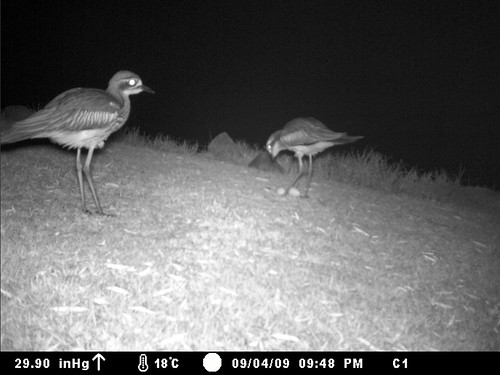The Ultimate Guide To Filming Nocturnal Animals
 |
| Image : Doug Beckers (Flickr) |
The More You Know
If you're going after shots of a specific animal, the first thing you'll need to do is a little bit of research. You should find out how they behave at night, and where they're likely to be so you know where to set up your camera. Badgers, for example, can most often be found near woods and hedgerows.
Animal tracking information can easily be found online, but you could also try asking other wildlife photographers in your area. They'll know some of the best spots for filming already, and should be happy to share them with you! In either case, the research can be great fun, and it'll help you to get the best possible shots.
Of course, one of the biggest appeals to nocturnal filming is that you can never be sure what will turn up! Areas like forests and lakes can have all sorts of different animals nearby, and it's great fun to see what unexpected animals you might capture.
Choosing Your Equipment
For nocturnal photography, it's not a good idea to just use a normal camera with a flash. Anything less than a professional-quality camera will be less likely to yield good results, and the use of a flash can badly blind some animals for as much as an hour after it goes off!
So what can you use? You'll be pleased to hear that specialised cameras aren't expensive these days, and come with loads of cool features to make life easier for the nocturnal shutterbug. You'll want to find something that has motion detection and infrared sensors, for taking pictures no matter how dark it gets. These cameras generally save their footage and photographs to a regular SD card, and weatherproofing means you can safely leave the device almost anywhere and collect it during the day.
Some cameras even come with 3G transmitters, so they can automatically send photos directly to your phone.
Getting Out There/Setting Up
Before you leave the house, put on some dark clothing and soft shoes. Nocturnal animals are often highly sensitive to noise and movement, and you don't want to scare away your subjects.
Once you're out and about, stay far enough away from the animals that you don't frighten them (or endanger yourself). Automated cameras can really help here, as they allow you to set up and then leave the area completely.
If possible, get everything organised during daylight so you can see what you're doing. If you do have to set things up at night, only use torches with red bulbs (or put red cellophane over a regular torch). Red light is less visible to the animals, and your eyes will adjust to it much faster in the darkness.
Get your camera set up on a sturdy surface (like a tree stump) to prevent blurry pictures, and make sure it has a good vantage point. You want to capture footage of the animals in full; not too high or too low. It helps if your chosen camera has a viewing screen for this. Finally, turn infrared mode on, and be certain that any built-in flash is off.
Now you just have to wait... Patience is the key to wildlife photography, and you can't expect immediate results, but keep trying.
Showing Off
The great thing about the specialist wildlife cameras is that you can just leave them to do their thing. Come back in a few hours, and you might find it's captured a whole load of brilliant footage and photographs to take back home.
For videos, the best place for sharing is YouTube. Make sure to tag the videos correctly, so other enthusiasts can find your work! You can then share the YouTube link with other wildlife websites.
For photographs, try image sharing sites like Flickr. Once they're uploaded, you can share them to message boards like Reddit, and get feedback on your work.
Most importantly, don't forget to share your discoveries with friends and family. Many people are fascinated to learn what animals can be found living right on their doorstep.
Hopefully you now have the urge to get out there and see what you can capture on camera.
Have you, or has anyone you know, tried filming nocturnal animals before? Share your comments and experiences below.


